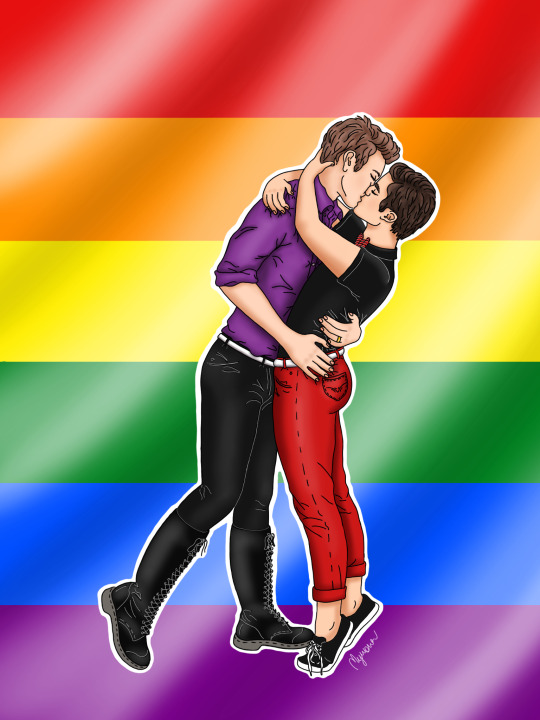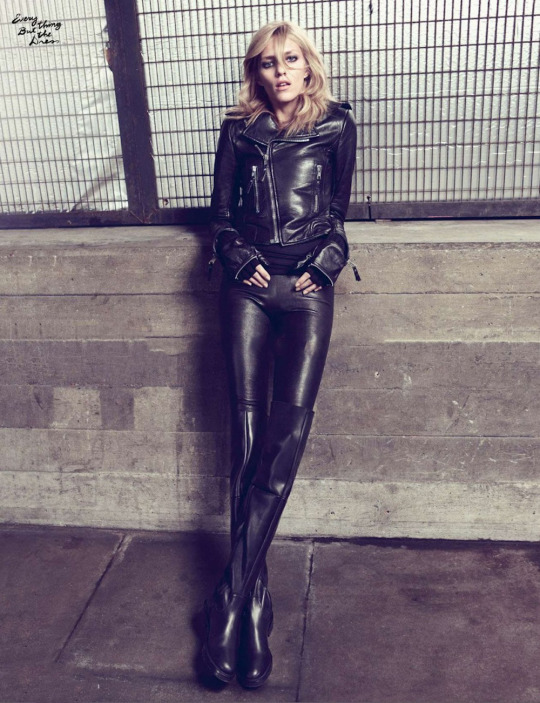#kurt's boots
Explore tagged Tumblr posts
Text

#happy pride month 🌈#this turned out better than i imagined first#i still have problems with it but whatever#i know blaine is a tiny bean but not THAT tiny but he is in my head sooo#isn't he adorable tho#btw you won't believe what the first thing I drew for this was#kurt's boots#lmao#idk why but i just wanted to see them here#also that's why kurt's leg's a bit weird i guess#kurt hummel#blaine anderson#klaine#klaine art#klaine fanart#glee art#glee#myno's stuff#i loved drawing this one#kisses. kisses everywhere#❤️#pride month#pride
237 notes
·
View notes
Text


has this been done yet
#a dapper man!#kurt wagner#nightcrawler#marvel#xmen#my art#art#maison margiela#tabi boots#i almost forgot to draw his tail in the second one omg
1K notes
·
View notes
Text
posting all of the team's reactions to kitty making up a story for illyana that one time



plus the ending bc it warmed my heart

#xmen#x men#uncanny xmen#this was so fun to read btw#uncanny x-men#yes I'm gonna also tag this as#logurt#cause ofc i am#uncanny x men#x-men#kitty pride#nightcrawler#kurt wagner#wolverine#logan howlett#james logan howlett#cyclops#scott summers#jean grey#thats the girl with whom kitty pairs him off at the end btw#like thats supposed to be jean and its pretty sweet of her#illyana rasputin#charles xavier#storm#ororo munroe#colossus#piotr rasputin#carol danvers#xmen tag#also ft is kurt wearing. go off king wear boots to sleep
145 notes
·
View notes
Text

Kurt cannonically parties with furries so natually I had to draw him and Jasper at a fur con :3
#ft. some of my friends' sonas in the background#Jasper's wearing paw boots bc his actual paws are too small to be fake and he's trying to blend in with the fursuiters lol#convinced Kurt to buy some blue cat ears#xmen oc#jasper#oc x canon#my art#furry art#nightcrawler#nightcrawler x oc#xmen
24 notes
·
View notes
Text

Anja Rubik for Kurt Geiger
140 notes
·
View notes
Text


Aweeee siblings and their strange choice of footwear
#I get that this is a part of Kurt's costume and not semi casual#i also understand that he probably gets custom ordered shoes#but i saw her boots and giggled#strange fashion in the marvel universe#nightcrawler#kurt wagner#xmen#marvel#x-men#x men 97#rogue
49 notes
·
View notes
Text



Just some shows I’ve been in during my hiatus. So many wonderful people I’ve had the pleasure of meeting, and becoming friends with. Healing for me started with allowing myself to be open and vulnerable.

#RENT#Legally Blonde#Kinky Boots#Roger Davis#Charlie Price#Warner Huntington III#musical theater#me#Heathers#kurt kelly
15 notes
·
View notes
Photo

so im making an object show
edit: i posted this way too early so all of the character sexualities are wildly inaccurate and some of the designs are completely different just warning you. genders stayed the same tho
#naps#naps object show#naps LT#naps ladel#naps teddy#naps boxy#naps yarny#naps grid paper#naps kurt#naps phonograph#naps planey#naps quill#naps boot#naps hat#naps cookie#if i ever get fanart i'll cry
73 notes
·
View notes
Text


#grunge#aesthetic#90s grunge#2014 tumblr#soft grunge#emo#kurt cobain#courtney love#johnnie guilbert#tumblr girls#14#boots#dr martens#90s#90s aesthetic#vintage aesthetic#riot grrrl
5 notes
·
View notes
Text
Utterly devastated thinking about two Walken character deaths… fuck man
#the minister speaks#these boots were made for Walken#I haven’t even seen the deer hunter but I know enough that seeing pictures from it makes me ache#that’s not even a movie you want to get someone to watch with you but I feel like I’m gonna need the emotional support to get through that#I’m not gonna not watch it it’s widely considered Walken’s greatest performance#and he’s not just a pretty face to me#I do actually adore my favorite actors’ acting capabilities#I’m just reluctant because I know too much and know I’m gonna be fucked up for a while#also it was one of the two Walken movies my stepmom recommended and she loves him#Kurt is the other one. which isn’t too bad in comparison#but still is a sucky death :(
2 notes
·
View notes
Text
One of my halo OCs, Boot has an RVB AU version and it's so interesting to me that by accident I made him so mentally unwell in Halo that he's the perfect little guard dog but in RVB since he was able to actually get passed his issues he's just kinda a competent but not exceptional soldier while being generally dislikable.
Boot's big trauma is losing his twin brother in a Covenant attack. He had to grapple with seeing someone just like him die right in front of his eyes, and there was nothing he could do.
In halo after this he was scooped into the Spartan-III Program, and Spartans aren't meant to worry about their mortality so he's been pushing it down for over a decade, but it's why he's reconnaissance and scouting, he uses drones and ai to constantly be everywhere and know everything, because he can't bare to let anyone go down again. He refuses to lead or make plans because he fears what'd happen if he screws up, he just needs to be the perfect soldier because it'll mean that one day he won't have to fight for those he loves.
In rvb he got over that shit, he realized "Shit man, any of us can fuck up, even myself" and he decided "I'm gonna become the best me there is." So he did, he just got real good at doing everything by himself. He can't handle teams, he doesn't do orders, plans are "whatever I think will work". His AI is just meant to do the background parts of his plans, cover for things like hacking that he can't do but otherwise it stays silent and it stays outta the way. He'd make a great Mercenary if he didn't hold his allegiances close to the UNSC, and at the end of the day his loyalty and admiration is what keeps him in, he barely passed into ODST training because they knew it'd take an act of God or death for him to not work for the UNSC.
#OC: Cameron-T307 “Boot”#OC: Kurt “Boot” Samson#Also what helped me alot was Starfield because I played the RvB version of Boot in that game#I'm not tagging this as H⁴lo or R^B just cuz I wanna keep my insane OC talk to my own realm#leave the demon to its ocs
2 notes
·
View notes
Text

Oh mygooooodd
#Watts you are so beautiful…………….#Leo is there too i guess#Bonnard too. man fuck uou#I love how they all have these fucking boots#Serge is also shorter than Kurt hel😭😭
9 notes
·
View notes
Photo

KURT GEIGER CAMPAIGN: FALL/WINTER 2019
Marina Diamandis was the face of the Fall/Winter 2019 collection of luxury British footwear and accessories brand Kurt Geiger! The campaign was shot by Erik Torstensson.

Throughout the photoshoot, Marina wore a sparkly number from the ASOS “Edition” line. This silver sequined blazer features a slightly oversized fit, a double-breasted front with silver satin-covered buttons and silk lining.

How adorable are her earrings?! These multi-colored crystal heart-shaped stunners are the She Has Arrived by 8 Other Reasons.

M modeled two different versions of Kurt Geiger’s Kensington metallic rainbow stripe leather bags. One is studded with crystals ($295.00) while the plain one is the XXL version ($375.00). Both bags feature the house's signature antiqued silver eagle head with rainbow-colored crystals.
Shop:
Kurt Geiger “Kensington” Crystal Bag ($295.00)
Kurt Geiger “Kensington” XXL Bag ($375.00)

Her other (sold out) Kurt Geiger accessories included the Kensington leather phone case with chain strap, the super fashionable travel mug...

...and the Bellevue grey Prince of Wales print ankle boots featuring a cigarette heel and crystal embellishments on the front.
3 notes
·
View notes
Text
I literally forgot John mulaney existed yesterday lmao
#what a swift fall from relevance 😬 its like he was the It Guy and all of a sudden im#like 'whooaa is that kurt braunohler playing a major character in a big budget animated film?? oh no wait its - oh! oh ok'#(puss in boots btw excellent film you should go see it)#im not saying anything btw. his personal life is his business but the dave chapelle thing was bad#obv hes still getting work but im just saying he fell from relevance in the social media circles that i personally frequent#i cant be bothered to care abt celebrities anymore quite frankly so idk whos actually culturally relevant anymore#anyway puss in boots was incredible
3 notes
·
View notes
Text
OH GOD SOMEBODY DID MY TWO FAVORITE NNIGHT BLUE BOYS

i think they would be very good friends!
#quaking in my boots#quaking shitting my pants#also yes I did know that#did u know he was originally going to be an actual demon#dick grayson#nightwing#kurt wagner#nightcrawler#x men#dc comics#dc#batman#batfamily
8K notes
·
View notes
Text
i don’t think anyone cares buuut i’m working on some cosplays for a convention in my area (it’s several months away but i wanna be Prepared) and i am So Scared. this is my first time making cosplays. i think perhaps i will contact the cosplay club on my college campus for help
#uuuuh should i tag this as who im cosplaying or no#im not gonna maintag it but im cosplaying kurt wagner and wolverine#if anyone knows how to make nightcrawler boots PLEASE message me i am so nervous
1 note
·
View note